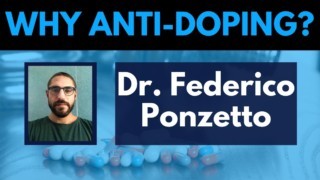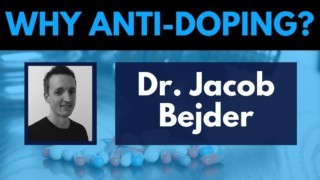Clean sport research can be incredibly rewarding, but you don’t have to take the Partnership for Clean Competition’s word for it. Researchers in the anti-doping space bring a lot of passion to their work. We decided to let them explain what makes the field so compelling in their own words.
Dr. Michael Polet is a post-doc researcher and head of the IRMS department at the WADA-Accredited DoCoLab Ghent.
How would you describe your work to someone unfamiliar with the field?
I would consider my work as a chain of small discoveries followed by sequential improvements that, as a whole, lead to significant and innovative advances for the anti-doping community. For example, the development of the first open GC-MS screening method on GC-QTOF allows doping control laboratories to switch from the current GC triple quadrupole MS screening methods to an equivalent open high-resolution acquisition screening method. Here, retrospective data analysis can be used to re-evaluate previously acquired data (e.g., searching for prohibited substances that were unknown at the initial moment of analysis), providing a powerful tool in the fight against doping and deterring athletes from doping abuse. We also started exploring the potential of analyzing non-hydrolyzed sulfated steroids on GC-MS. It is an exciting approach that brings new opportunities and possibilities. In the long run, we aim at including sulfated metabolites of anabolic steroids in the GC-MS routine screening method. This will enable significantly longer detection windows for anabolic steroids.
Why are you drawn to anti-doping?
Anti-doping is a particularly challenging field due to its dynamic nature and the need for state-of-the-art methodologies. It requires exploiting analytical instruments such as liquid and gas-chromatography-mass-spectrometers to their full potential. Exploring and pushing the capabilities of these analytical instruments is extremely fascinating and provides answers for difficult anti-doping control related issues. Developing these innovative approaches is very rewarding and provides day-to-day challenges.
Why should scientists in related fields take a look at contributing to anti-doping?
In sports drug testing, state-of-the-art methodologies are used to maximize the chance of detecting doping abuse and provide high-quality analyses. Continuous research on various levels is necessary to ensure that doping-control laboratories can maintain and improve their capabilities. In addition, it is a field of research related to many other disciplines (e.g., forensics, toxicology, food analysis, clinical chemistry), meaning that many of the developments in doping control can be transferred to other disciplines.
Would you like to help spread the word about anti-doping research by answering these questions for our next post? Know someone you’d like to hear these answers from? Tweet at @PCCAntiDoping or email Communications Director David Kumbroch at dkumbroch@cleancompetition.org to nominate someone.




